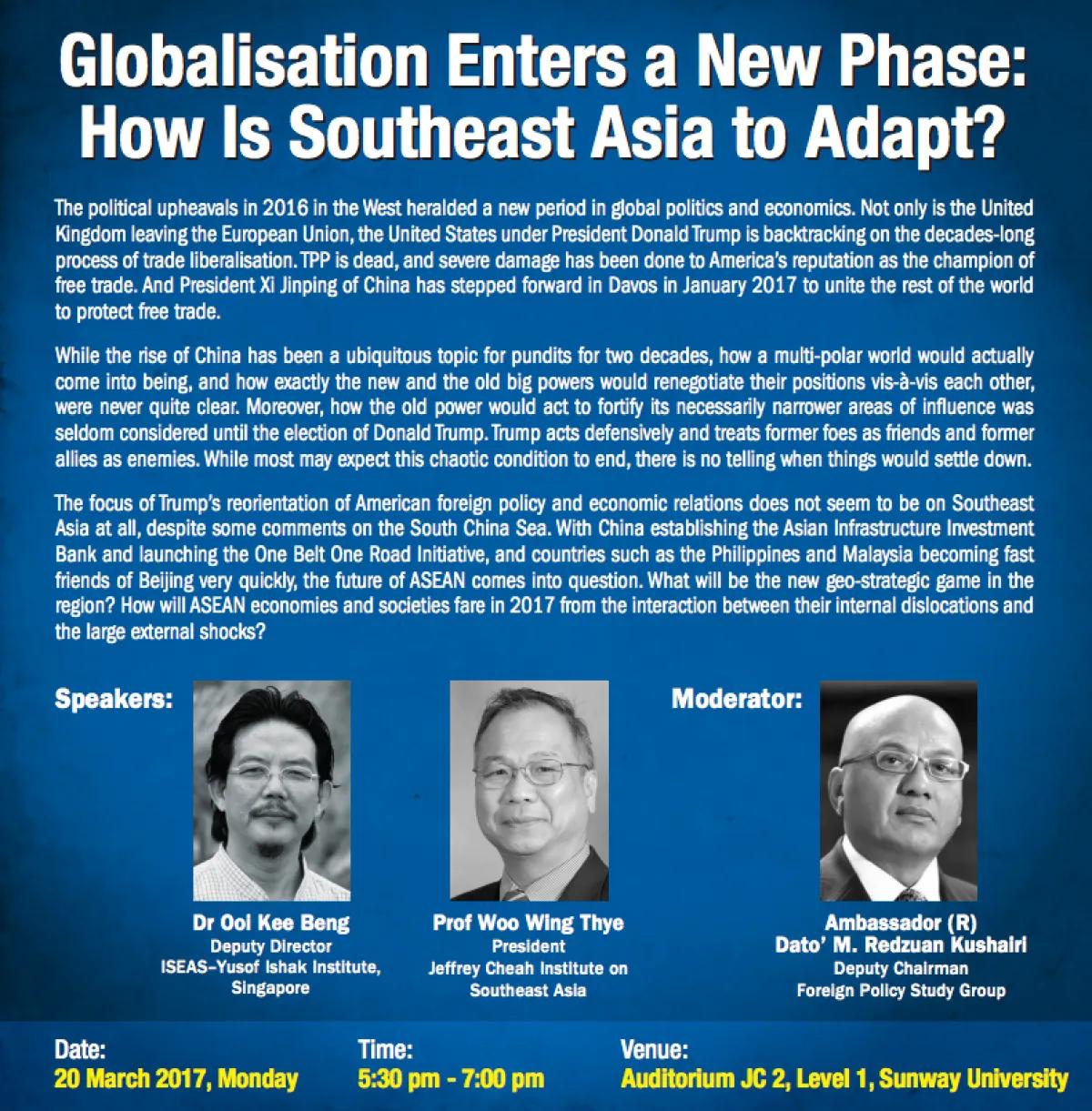Abstract
The political upheavals in 2016 in the West heralded a new period in global politics and economics. Not only is the United Kingdom leaving the European Union, the United States under President Donald Trump is backtracking on the decades-long process of trade liberalisation. TPP is dead, and severe damage has been done to America’s reputation as the champion of free trade. And President Xi Jinping of China has stepped forward in Davos in January 2017 to unite the rest of the world to protect free trade.
While the rise of China has been a ubiquitous topic for pundits for two decades, how a multi-polar world would actually come into being, and how exactly the new and the old big powers would renegotiate their positions vis-à-vis each other, were never quite clear. Moreover, how the old power would act to fortify its necessarily narrower areas of influence was seldom considered until the election of Donald Trump. Trump acts defensively and treats former foes as friends and former allies as enemies. While most may expect this chaotic condition to end, there is no telling when things would settle down.
The focus of Trump’s reorientation of American foreign policy and economic relations does not seem to be on Southeast Asia at all, despite some comments on the South China Sea. With China establishing the Asian Infrastructure Investment Bank and launching the One Belt One Road Initiative, and countries such as the Philippines and Malaysia becoming fast friends of Beijing very quickly, the future of ASEAN comes into question. What will be the new geo-strategic game in the region? How will ASEAN economies and societies fare in 2017 from the interaction between their internal dislocations and the large external shocks?




